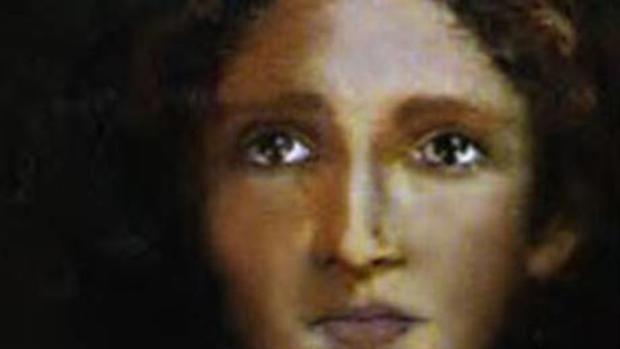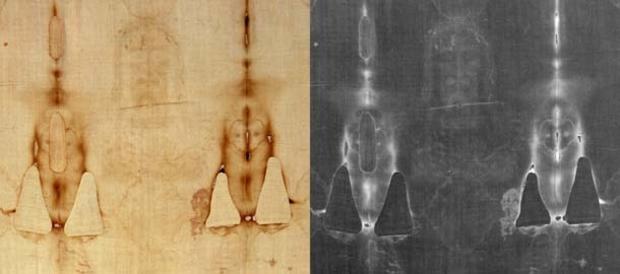Controversial new theories on the Shroud of Turin
(CBS News) The Shroud of Turin has intrigued believers and non-believers alike for centuries. On this Easter Sunday morning our Cover Story is reported by Martha Teichner:
It's possibly the greatest "What if ..." in the world. What if the Shroud of Turin really is the burial cloth Jesus was wrapped in . . . and the faint imprint on it, the image of a man who has been tortured and crucified, really is Christ himself?
The last time the Shroud was on view, for six weeks in 2010, more than two million people saw it, even though in 1988, after a carbon dating test, it was declared a medieval fake - dating from between 1260 and 1390.
The story was supposed to be over. But tell that to the throngs who waited hours for the chance to spend seconds before it in reverent silence.
And tell that to scholars who think the carbon dating results were just plain wrong, among them art historian Thomas de Wesselow.
De Wesselow - an agnostic, originally a skeptic about the Shroud - has just published a provocative new book about in which he concludes it's genuine.
He compared it to artwork depicting the Crucifixion created since the Middle Ages, referring to the Station of the Cross at the Church of St. Ignatius Loyola in New York City: "If you look at the hands on the cross, the nails go through the center of the palms," he showed Teichner. "That part of the hand is not strong enough to bear the weight of the body."
Meanwhile, the image on the Shroud shows the nail wounds going through the wrists. "That's how they would have done it in Roman times," said De Wesselow, supporting the idea that the Shroud is much older than the middle ages.
He said the Shroud illustrates signs of the events of Good Friday through Easter Sunday. "You start off with the flagellation, and that's very clearly presented on the Shroud, with these very, very distinct marks of the flagrum," he said. "You can then see the crown of thorns. He then is beaten and you can see on his face underneath his eyes there's a swelling. His nose looks as if it's been broken." There is also the mark of a puncture of a spear, with "dribbles of blood coming down."
Just coincidence?
But now here's the provocative part: De Wesselow's take on the resurrection - what he says happened on Easter Day when Mary Magdalene and two other women went to Jesus' tomb:
"They go to the body, they lift off the cloth, and they notice this strange shadowy form on the cloth itself," he said. "Immediately, they would have had this perception of it as a living presence in the tomb with Jesus."
"They didn't see Jesus come alive again?"
"No, I think what they saw was the Shroud," De Wesselow said. "Once they saw the Shroud they understood that he'd not been resurrected in the flesh, he'd been resurrected in the spirit."
According to de Wesselow, each supposed sighting of the risen Christ was actually a sighting of the Shroud. He's convinced it was what sparked the rapid spread of Christianity, as it was taken from Jerusalem to Galilee, then to Damascus, where he believes Paul saw it and became a Christian.
Next, to a town called Edessa, in Turkey, and in the year 944, to Constantinople. There's a drawing from the 1190s of what some scholars believe was the Shroud. A French knight wrote about seeing such a cloth in Constantinople before the city was sacked by crusaders in 1204.
"We can show perfectly rationally where the Shroud was all the way back to the first century," de Wesselow said.
More than a thousand years before it turned up in Lirey, France, where Geoffrey de Charny - descended from one of the crusaders who led the sacking of Constantinople - put it on display in 1355, right about when the carbon dating results said it was faked.
It's been in Turin, Italy since 1578.
"It could well be the burial cloth of Jesus - I wouldn't discount that possibility," said Harold Attridge, dean of Yale Divinity School and an eminent New Testament scholar, said of de Wesselow's book: "That's part of the case that he makes; the other part is trying to see how the discovery of this cloth might have functioned in generating belief about the resurrection, and that's much more, in my mind, conjectural.
"However this image was formed, it was formed in a way that's compatible with the ancient practice of Crucifixion," said Attridge.
"So that is at least plausible?" asked Teichner.
"That's at least plausible, yeah, yeah, and the blood stains, for instance, are clearly not paint," he said.
That much has been proven. But, is it Jesus or someone else? Or is it an expert fake?
In 1898, Secondo Pia was allowed to photograph the Shroud. The image he saw in his darkroom startled the world. The Shroud, it turns out, is like a photo negative.
"There were plenty of other images of Christ which are meant to be imprints of his face, dating from the middle ages," said de Wesselow. "And none of them look remotely like the Shroud."
Thomas de Wesselow's specialty is medieval art. "People did not know about negative images in those days. No one could have seen the realistic image that's hidden behind the negative image on the cloth."
In 1978, a group of respected American scientists and scholars calling themselves the Shroud of Turin Research Project (or STURP) were given 120 hours to subject the Shroud to a "CS"-like forensic study. Working 24 hours a day, they set out to discover how the image was made, and if it was a fake. They couldn't.
"What seems to have happened is that there was a chemical reaction between the decomposition products on the body and the carbohydrate deposits on the cloth," said de Wesselow. The conclusion of one of the STURP scientists was that a chemical process known as a Maillard reaction had occurred. (It's the same reaction that causes the crust of bread to go brown in the oven.)
High definition photography has brought new detail to the case made by the cloth itself. Its size, roughly 3 1/2 feet by 14 feet; its distinct herringbone weave; even the way a seam was sewn is consistent with ancient burial cloths found near Jerusalem. Pollen samples taken from it show that, at some time, it was near Jerusalem and in Turkey.
For just a moment, suppose Thomas de Wesselow's theory is right. The implication that the image on the Shroud is authentic, but can be explained by scientific evidence - and what it means to a cornerstone of Christianity - is stunning.
"I'm obviously not the first person to deny that the Resurrection happened," said de Wesselow. "Some people will dismiss [the book]. Some people will be intrigued by it. And some people may change their attitudes on one thing or another by it."
Yale Divinity School Dean Attridge said, "For many, many mainstream Protestants and Catholics, certainly evangelical Protestants, you have a notion that you need the resurrected body in the way that it's described in Luke and John. That was not Paul's belief. Paul did not have a belief in the physical resurrection of Jesus. And I tend to agree with Paul. But it remains something of a mystery."
. . . as does the history and meaning of the Shroud of Turin. There is, after all, the carbon dating evidence, confirmed by three different labs. The Catholic Church, owner of the Shroud, accepted those findings. But when it was on display in 2010, Pope Benedict called it "a burial cloth, which wrapped the body of a man crucified in total conformity with what the evangelists tell us of Jesus..."
So, what is the truth?
For more info:
- "The Sign: The Shroud of Turin and the Secret of the Resurrection" by Thomas de Wesselow (Dutton)
- The Church of St. Ignatius Loyola, New York, N.Y.
- Yale Divinity School

